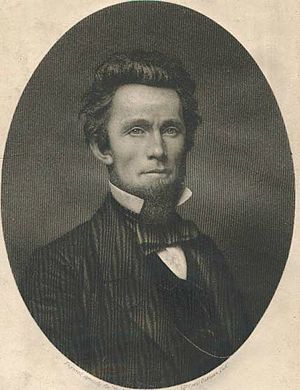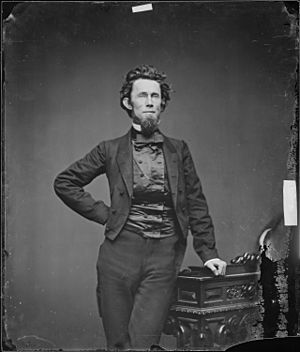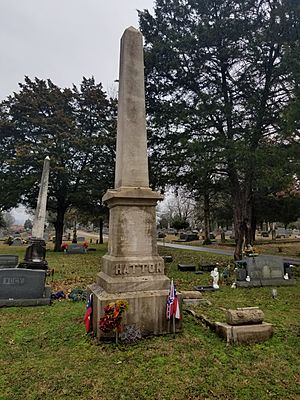Robert H. Hatton facts for kids
Quick facts for kids
Robert H. Hatton
|
|
|---|---|
 |
|
| Member of the U.S. House of Representatives from Tennessee's 5th district |
|
| In office March 4, 1859 – March 3, 1861 |
|
| Preceded by | Charles Ready |
| Succeeded by | William B. Campbell (1866) |
| Member of the Tennessee House of Representatives from Wilson County | |
| In office October 1, 1855 – October 5, 1857 |
|
| Personal details | |
| Born |
Robert Hopkins Hatton
November 2, 1826 Steubenville, Ohio |
| Died | May 31, 1862 (aged 35) Henrico County, Virginia |
| Political party | Opposition Whig |
| Alma mater | Cumberland University |
| Military service | |
| Allegiance | |
| Branch/service | Confederate States Army |
| Years of service | 1861–1862 |
| Rank | Brigadier General (not confirmed) |
| Battles/wars | American Civil War |

Robert Hopkins Hatton (born November 2, 1826 – died May 31, 1862) was an important person from Tennessee. He was a lawyer and a politician. He served in the state government and later in the United States Congress. During the American Civil War, he became a general for the Confederate side.
Contents
Robert Hatton's Early Life and Career
Robert Hatton was born in Ohio, either in Steubenville or Youngstown, Ohio. His father, Robert Clopton Hatton, was a Methodist preacher. In 1842, when Robert was 16, his family moved to Tennessee.
He went to Cumberland University and then studied law at Cumberland School of Law. After passing his law exam in 1850, he started a successful law business in Lebanon, Tennessee.
Politics Before the War
Hatton joined the Whig Party. In 1855, he was elected to the Tennessee State Legislature. This is where laws are made for the state. In 1857, he tried to become the governor of Tennessee, but he did not win.
In 1858, he was elected to the United States House of Representatives. He represented Tennessee's 5th District in the U.S. Congress. He was part of the Opposition Party because the Whig Party had ended. In Congress, he led a committee that looked at spending in the Navy Department.
Robert Hatton and the Civil War
At first, Robert Hatton wanted the United States to stay together. He did not support states leaving the Union. However, after President Lincoln asked for soldiers to stop the rebellion, Hatton changed his mind. He then supported the Southern states leaving the Union.
Joining the Confederate Army
Hatton created a military group called the "Lebanon Blues." This group became part of the 7th Tennessee Infantry regiment. Hatton was quickly chosen as the colonel of this regiment. In July 1861, his regiment was sent to western Virginia.
In 1862, Hatton and his soldiers were sent to the Richmond area. This was to fight against the Union army that was moving toward the Confederate capital. During this time, known as the Peninsula Campaign, Hatton fought very well.
Promotion and Death
On May 23, 1862, Robert Hatton was promoted to brigadier general. He was put in charge of the 4th Brigade in the Army of Northern Virginia. However, this promotion was not officially approved by the Confederate Congress before he died.
Just eight days later, on May 31, 1862, General Hatton was killed. He was shot in the head while leading his Tennessee Brigade during the Battle of Seven Pines, also known as the Battle of Fair Oaks.
Burial and Legacy
After he died, Robert Hatton's body was sent back to Tennessee. But because Union soldiers were in Middle Tennessee, he was first buried in Knoxville. On March 23, 1866, he was reburied in Cedar Grove Cemetery in Lebanon, Tennessee.
In 1912, a statue of Robert Hatton was put up in the town square of Lebanon.

Honors and Memory
A group called the Robert H. Hatton Camp #723 of the Sons of Confederate Veterans is named in his honor. You can learn more about them at their website: [1].



